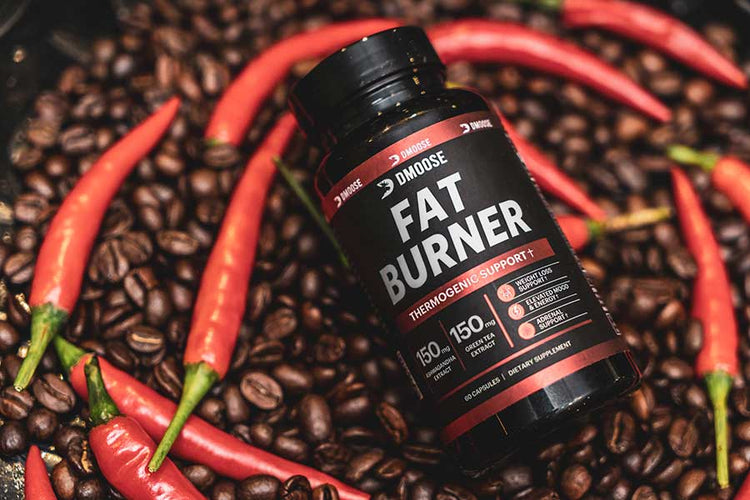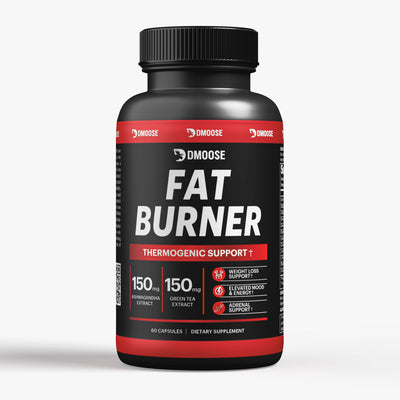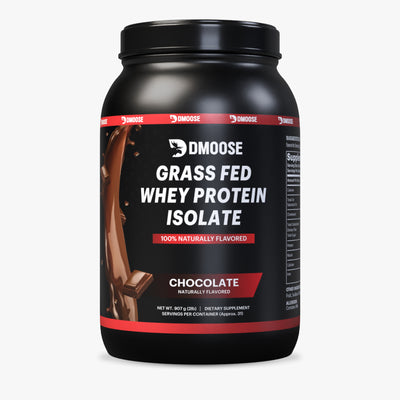You’ve seen the shredded physiques and chiseled abs. But sometimes, even elite bodybuilders show a bloated, distended belly despite being lean. Known as Palumboism or bubble gut, this strange phenomenon has sparked plenty of debates and confusion.
It’s not caused by excess fat, but many lifters mistake it for it making it all the more important to understand what’s really going on. And if your goal is fat loss, using a natural fat burner supplement can help accelerate your results while you focus on training smart.
But what really is Palumboism? Is it the result of steroids, growth hormones, extreme training, or something else entirely? In this post, we’re diving deep into the truth behind bubble gut, separating fact from fiction, and uncovering how to spot it, what causes it, and how athletes can steer clear.
What Is Palumboism?

Palumboism, often referred to as “bubble gut,” is a condition where a bodybuilder's abdomen appears unnaturally large and bloated, even when the rest of the body is extremely lean and muscular. It’s named after professional bodybuilder Dave Palumbo, who was one of the first to display this distended midsection on stage, sparking curiosity and concern across the bodybuilding world.
Palumboism is also commonly referred to as bubble gut, GH gut, or bodybuilder belly in the fitness community.
Unlike traditional belly fat or bloating from poor diet, Palumboism isn’t about excess weight. Instead, it's characterized by a protruding stomach with visible muscle definition, often accompanied by an exaggerated V-taper and disproportionately wide waist.
What makes it so shocking is the contrast with shredded arms, legs, and chest, but a midsection that juts out unnaturally. This contradiction not only affects aesthetics but can also raise questions about overall health and long-term consequences.
Who Is Dave Palumbo and How Did He Become the Face of "Bubble Gut"?
Dave Palumbo was once a highly respected bodybuilder, admired for his muscular build and dedication to the sport. However, as time went on, noticeable changes in his physique began to spark concern, particularly a dramatically distended abdomen that clashed with the rest of his lean frame.
Photos of Palumbo’s bloated midsection quickly spread across bodybuilding forums and social media, drawing widespread attention, criticism, and speculation. His overall muscle mass and stage performance declined, and eventually, he faded from the competitive spotlight.
As more athletes began to exhibit similar symptoms, the phenomenon was unofficially named Palumboism, forever linking the condition to his legacy.
Why Do Some Bodybuilders Develop Bubble Guts?
The infamous “bubble gut” or HGH gut doesn’t appear overnight. It develops gradually, and several factors may contribute to this unusual and often criticized look. Here’s a breakdown of the most commonly suspected causes:
1. Growth Hormone and Insulin Use
One of the main theories behind bubble gut is the use of human growth hormone (HGH) and insulin. These substances are often used by bodybuilders to increase size and performance, but they may also cause internal organs like the liver, kidneys, and intestines to grow.
This internal growth can push the abdominal wall outward, resulting in a bloated and protruding appearance, even in someone with low body fat.
2. Extreme Caloric Intake
To support muscle growth and recovery, bodybuilders often eat very large quantities of food. Over time, this constant overfeeding can stretch the stomach and digestive tract, especially during bulking phases.
The result is a midsection that begins to push outward, even when the athlete is lean.
3. Weak Core or Overreliance on Belts
Focusing heavily on heavy lifts while neglecting proper core training can weaken the deep abdominal muscles. In addition, relying too much on weightlifting belts may reduce the engagement of core stabilizers.
This combination can make it difficult to keep the stomach pulled in, leading to a rounded or distended look.
4. Accumulation of Visceral Fat
Even if a bodybuilder has very little fat under the skin, they might still carry visceral fat—fat stored around the internal organs. This type of fat sits deeper in the abdomen and can cause a protruding stomach, adding to the bubble gut effect.
5. Genetics
Just as some people are predisposed to carry weight in certain areas, genetics might play a role in a predisposition to develop a bubble gut.
6. Carb Loading and Water Retention
Before competitions, bodybuilders often load up on carbohydrates to increase muscle fullness. This is known as carb loading, and it's a common method used to store more glycogen in the muscles.
While effective for appearance, carb loading can also lead to temporary bloating and stomach bloating. Though not a direct cause of bubble gut, it can exaggerate the look of abdominal distension on stage.
Female Palumboism

Palumboism is not exclusive to male bodybuilders. Although rare, there have been documented cases of female athletes showing signs of the condition.
However, it's significantly less common in women. The structural and hormonal differences between male and female bodies may contribute to why bubble gut appears less frequently in female competitors.
In most cases, the physical changes female bodybuilders experience are more often associated with virilization, which is a condition caused by excessive androgen use. This can lead to visible side effects like increased muscle mass, deeper voice, and facial or body hair growth.
Still, a few instances of female Palumboism have surfaced over the years, proving that while it's uncommon, it's not impossible. These rare cases often raise the same questions about drug use, organ growth, and extreme dietary practices that are debated in the male bodybuilding world.
Can You Reverse Palumboism?
Currently, the only known way to potentially reverse Palumboism is to stop taking human growth hormone (HGH). Gradually tapering off HGH is often recommended instead of stopping abruptly, as it allows the body time to adjust safely.
Some professional bodybuilders, such as Dorian Yates and Ronnie Coleman, have shown signs of recovery after slowly reducing HGH usage. With enough time, the symptoms of Palumboism such as abdominal distension may begin to fade.
However, not all effects are reversible. In cases where acromegaly has developed, certain changes like increased bone density or skull size may become permanent.
For athletes pursuing a bodybuilding career, prevention is key. With proper training, nutrition, and responsible supplement use, it is possible to reduce the risk of developing Palumboism in the first place.
Related Article: The Best Advanced Workout Plan for Bodybuilders
How to Get Rid of Palumboism?
While Palumboism can be difficult to reverse completely, there are a few effective ways to reduce its appearance and prevent it from getting worse. Here are some strategies that can help:
Reduce Your Usage of HGH and Insulin
Human growth hormone (HGH) and insulin are commonly used in bodybuilding to increase size and aid recovery. However, prolonged use can lead to the enlargement of internal organs, which may push the stomach outward and create a bloated appearance.
To minimize this risk, gradually reduce your dosage or the frequency of use, especially during competition prep. Shifting your focus to natural training methods and recovery strategies can help you maintain muscle without contributing to abdominal distention.
Cut Back on Carbohydrates
Carbohydrates are essential for energy and muscle growth, but consuming them in excess, especially refined or high-volume carbs can cause bloating and water retention. These effects can make the abdomen appear larger than it really is.
To combat this, reduce your carb intake and focus on high-quality protein sources. Prioritizing protein can help keep you full while continuing to support muscle development, all while avoiding the bloated look.
Use a Fat-Burning Supplement

Fat-burning supplements can play a supportive role in reducing excess body fat, enhancing metabolism, and improving muscle definition. When combined with proper nutrition and training, they may help slim down the waistline.
The DMoose Fat Burner is made with 100% organic ingredients and is designed to support fat loss without sacrificing muscle. It is especially helpful during cutting phases when you are working to reveal a leaner, more sculpted physique.
FAQs
1. Is Palumboism a medically recognized condition?
No, Palumboism is not classified as a formal medical condition. It is an unofficial term used within the bodybuilding world to describe a distended abdomen in muscular individuals who are otherwise lean.
2. Can Palumboism affect athletic performance?
While Palumboism might not directly impact strength or endurance, it can influence posture, core control, and breathing. These changes may affect how well an athlete moves or performs on stage during posing routines.
3. Does Palumboism pose any health risks?
The visible symptoms are mostly aesthetic, but the underlying causes can reflect deeper health concerns. Issues such as internal organ stress, poor digestion, or metabolic imbalances may be associated with this condition.
4. Can abdominal exercises prevent Palumboism?
Strong abdominal and core training can help improve muscle control and reduce the appearance of a distended belly. However, core training alone cannot prevent Palumboism if the root causes are related to hormones or internal organ growth.
5. Are there any early warning signs of Palumboism?
Yes, early signs may include a midsection that gradually starts to protrude despite low body fat levels, frequent bloating, or reduced control when flexing or posing. Identifying these signs early can help address potential contributing factors.
6. Is Palumboism common among natural bodybuilders?
Palumboism is rarely seen in natural bodybuilders. It is most often observed in athletes who use performance-enhancing drugs and follow extreme bulking strategies. Natural lifters who stick to clean diets and balanced training usually avoid this issue.
Conclusion
Palumboism is a real concern for bodybuilders striving for that perfect physique, but it doesn’t have to derail your progress. If you're focused on getting lean, staying healthy, and maintaining muscle definition without sacrificing your goals, understanding the causes and prevention methods is crucial.
With the right approach whether it’s adjusting your supplement use, cutting back on carbs, or strengthening your core, you can keep your body in top shape and avoid the dreaded bubble gut. Remember, the goal isn’t just size; it’s about balance and a physique that reflects both strength and aesthetics.
So, take control, make the right changes, and let your hard work shine without the extra baggage.











